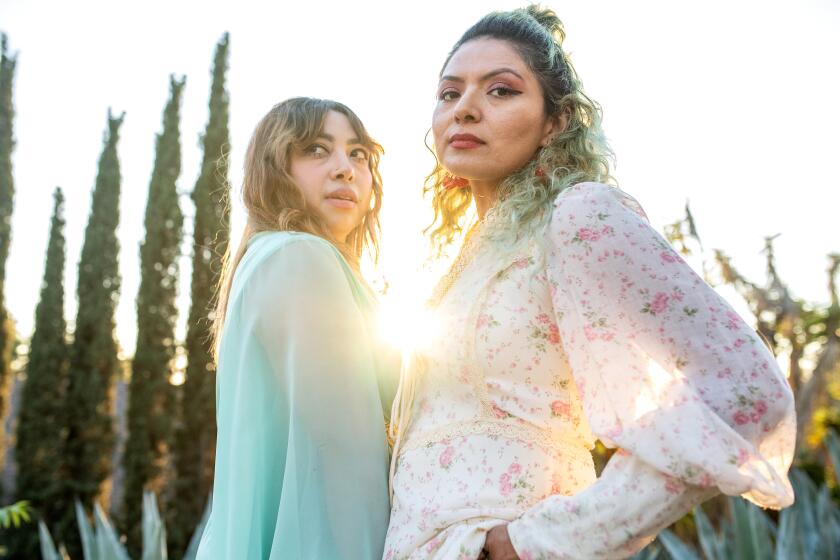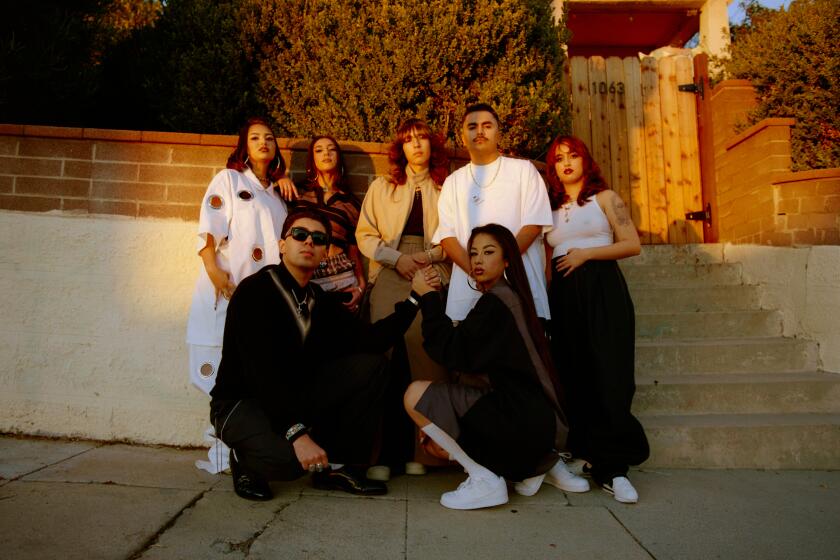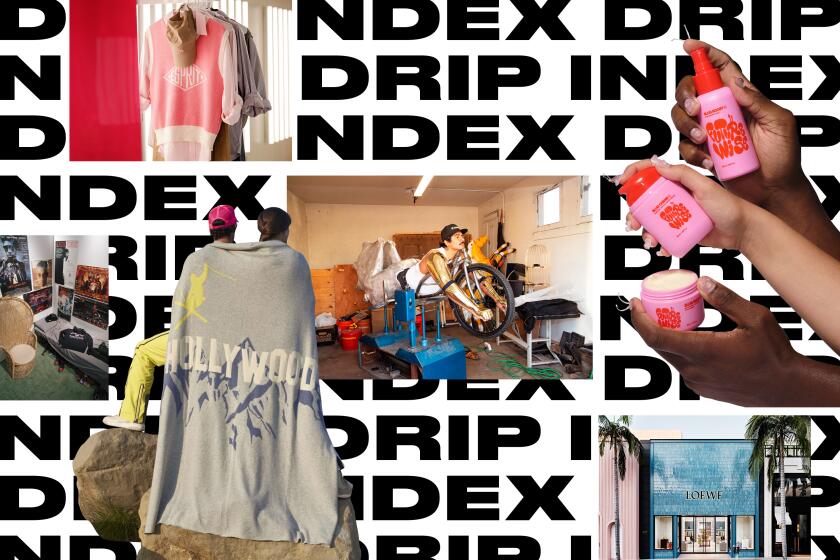- Share via
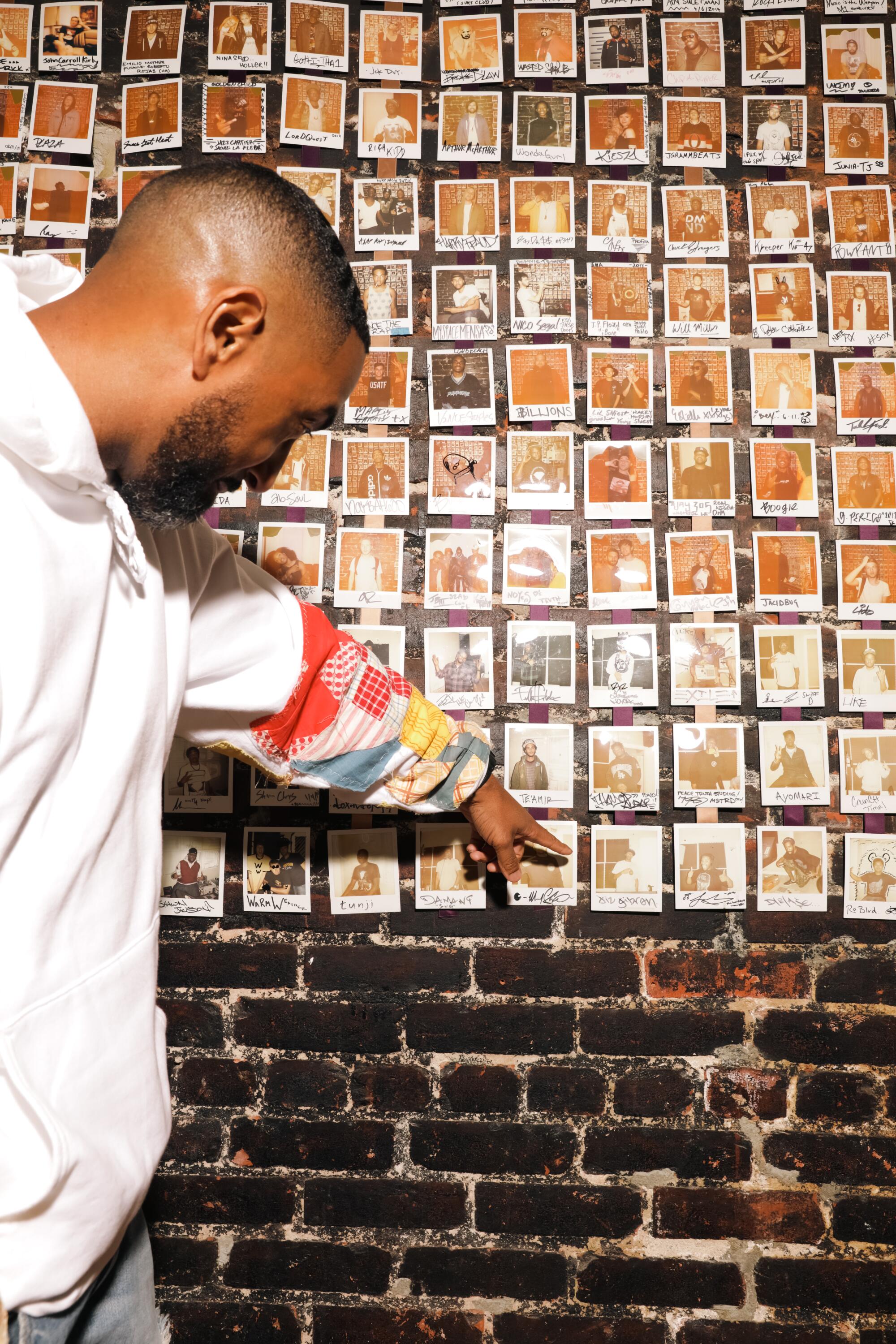
This story is part of Image Issue 16, “Interiority,” a living archive of L.A. culture, style and fashion that shows how the city moves from the inside. Read the whole issue here.
It really is important to document this era. It’s been touched on in various ways, but not holistically.
Everything from that whole time period continues to be felt and realized. People now are very much influenced by the spirit we set forth. Just doing things our own way. I was participating in every aspect of it. So I could see — I could feel that — it was rare.
I grew up in Santa Monica and then Pacific Palisades. And I participated in pretty much all things California board sports — I was a skater and I snowboarded. I also rapped and was into fashion. I went to Palisades High. The student body was very diverse. A lot of kids bused in from L.A. areas, a lot of Black and brown kids from South Gate, Boyle Heights, South L.A. — all over. And it was a true fashion show. Heavy on image and style. I took that really seriously coming up, developing a real aesthetic, a personal style, taking influences and flipping them on their head and making them very personal.
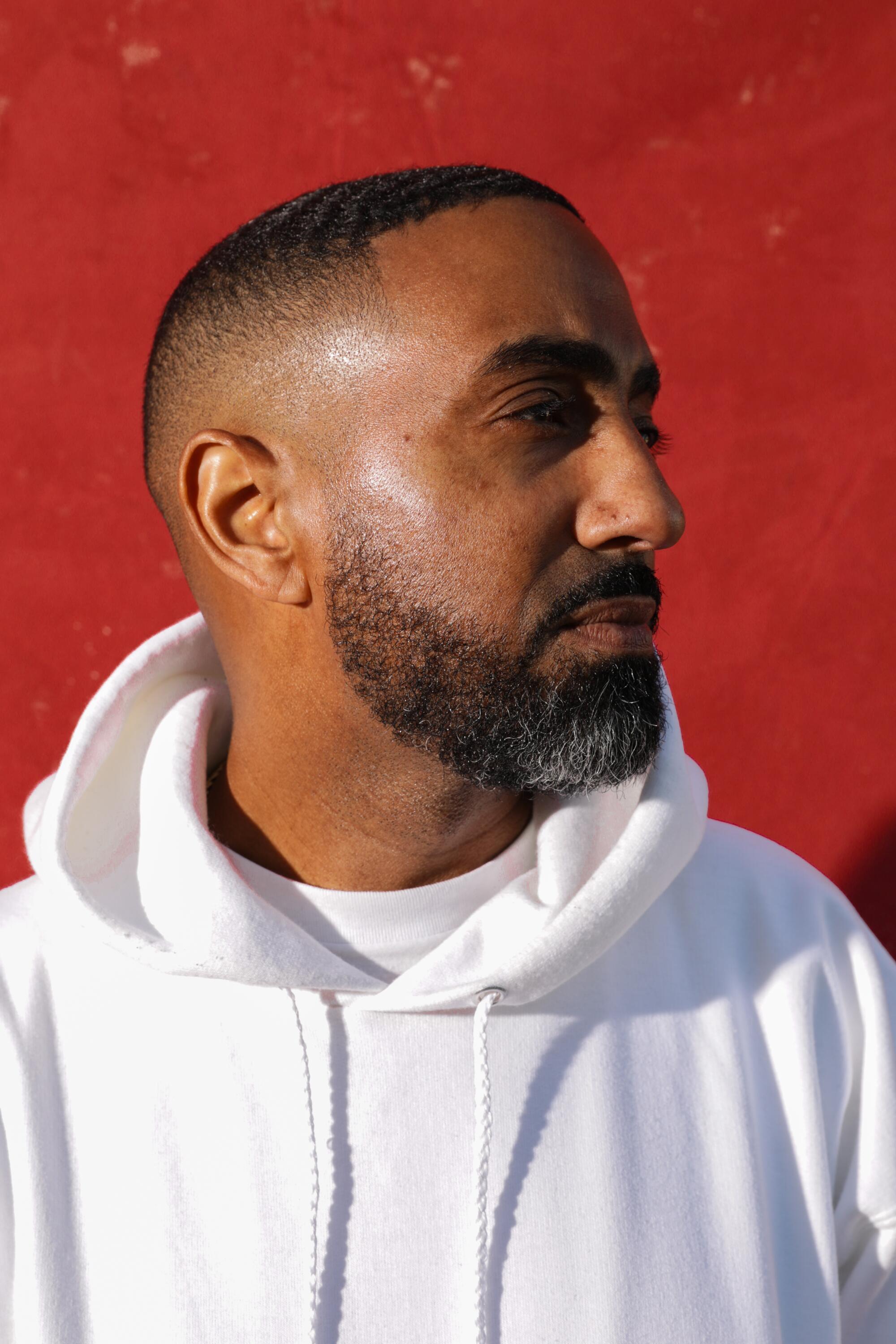
I was big on Grand Puba, Raekwon and Souls of Mischief, so it was heavy Nautica, heavy Polo, heavy Tommy Hil. We were heavy into preppy clothes, even though we would wear them very baggy. It was still kind of rooted in this aspirational, Ralph Lauren kind of aesthetic.
My family is from the South, and coming out of the Jim Crow South, you had to be buttoned up, clean. I mean, my grandmother got dressed — like dressed up — every day, whether she left the house or not. My father kind of was in that vein, and my mom was quite stylish as well. So I always gotta give credit to that.
In high school, early on, a good friend of mine was like, “Yo, you got to be fresh every day. Like you can’t repeat things.” I started having to get creative as far as what I was putting on, how I was mixing and matching and making sure that things weren’t so easily recognizable. This is pre-internet, pre-blog era, a time where you might go out trying to find what you saw on TV, but you didn’t find it. You might run across something else that was fly and be like, “Oh, I’m a rock with it.” That was a big part of our upbringing — at first trying to imitate something but later coming back with your own thing.
More stories from Interiority
rafa esparza on the story of ‘Corpo RanfLA: Terra Cruiser’
Sam Muller unpacks the oral history of Hollywood High 16
Julissa James examines the style legacy of Homies
Angela Flournoy talks to Robin Coste Lewis about ‘deep time’
Alan Nakagawa remembers the Japanese market on wheels
I went to college in 1996. I went to Florida A&M University, patterned after my grandparents and my parents; it’s family tradition for us. I wanted to be different. Even if it was the same brands, I was gonna do something that was gonna be a little bit to the left. A friend of mine’s brother from D.C. had a clothing brand that he was selling out of the trunk. I copped a few pieces. And shortly after wearing them I told my man, “Yo, I can sell these clothes for you.” My sophomore year, I was the proprietor of an independent clothing store in Tallahassee, Fla., called Team Style. That was a terrible idea at the time. It was short-lived; we didn’t know what we were doing. But it was my first foray into working in the fashion world. That totally changed my trajectory.
When I moved back to L.A. in ‘05 is when things really kind of accelerated. We were heavy shoppers, I’ll be real, me and my crew, we we’re serious about it. So we were always out shopping at Union, Stüssy, the Undefeated — that trifecta on that block on 1st and La Brea was a hangout for so many of us. It had a bit of a school element, a camaraderie, a kind of afterschool thing going on. Like-minded people. At the Undefeated, you were rubbing elbows with different rappers: Just Blaze was heavy in there, whenever he was in town. The Game used to pop through there a lot. Then we would go from Union to Melrose, this hodgepodge of shops. There was some cheesy stuff on there, but there were also some cool little streetwear spots too: Brooklyn Projects, Kendo. It was pretty much the Undefeated for women’s sneakers.
I think I got ingrained into it through really just being a lover of it all. I released this mixtape called “Spin City” under the moniker of Diz Gibran — named after Khalil Gibran; everyone called me Dizzy coming up — and that caught the eye of Nick Tershay, a.k.a. Nick “Diamond,” with Diamond Supply Co. Shortly after we met, he released the famous Tiffany Dunk. The quote unquote “Diamond Dunk” was a huge moment in sneaker culture. He and I hit it off and formed a great friendship, which resulted in me working with him.
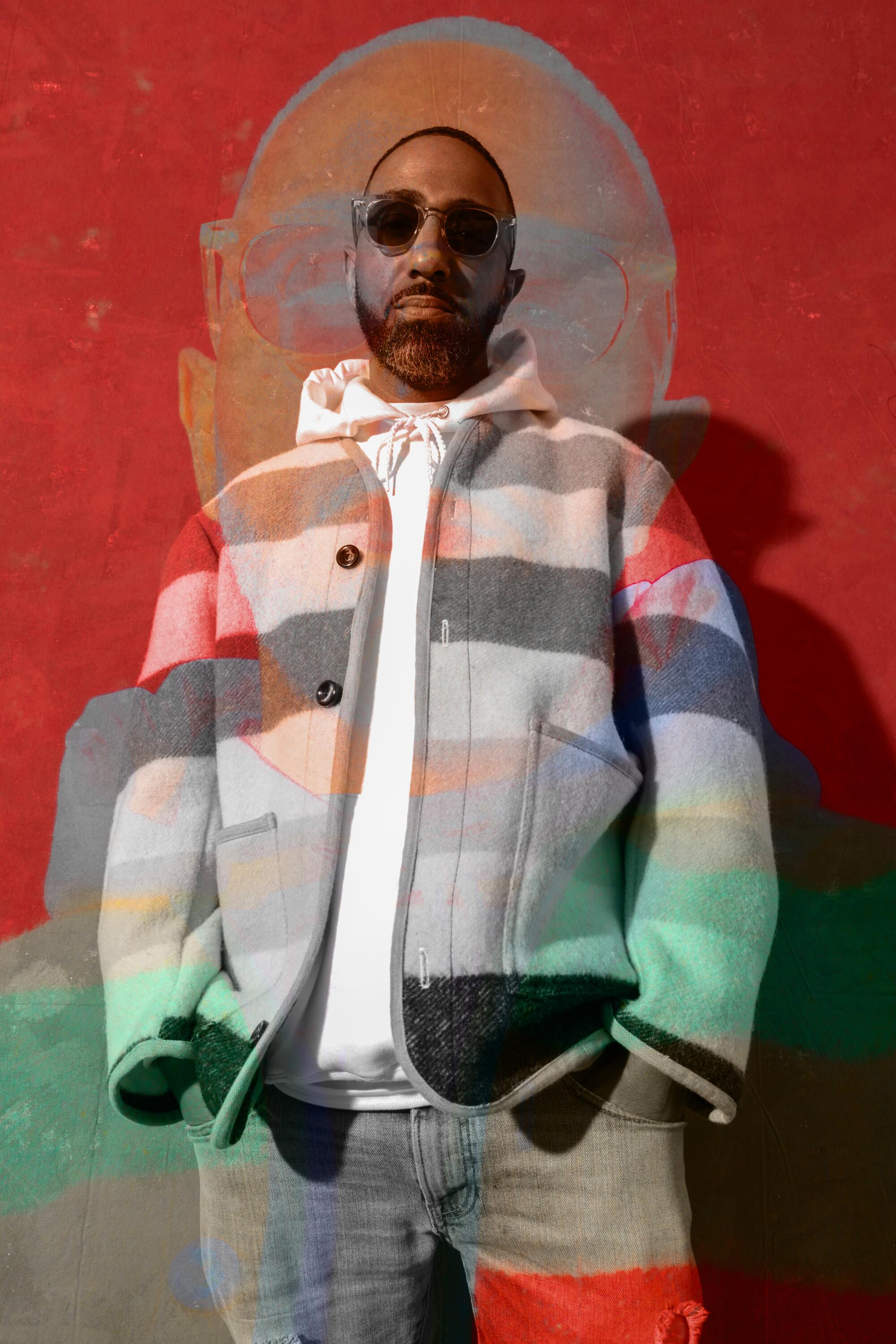
Nick and pro skater Stevie Williams were going to do this shop on Fairfax — a fitted hat store that was going to be a kind of a franchise off of Fitted Hawaii, which is a shop in Honolulu. They brought me in, and I was going to be a partner on that. Until we found out that our friends who had the women’s sneaker store Kendo on Melrose were opening a fitted hat store. Unfair, right? But it brought Nick and I to the realization that you’ve got this brand that is really starting to take off. Why wouldn’t you do a flagship store? You know, on Fairfax.
Supreme had opened up on Fairfax in ’04. That’s what got everybody coming over there — Supreme was this beacon for all of us. There wasn’t much else there at the time. Canter’s Deli was there. Turntable Lab was across the street. You had the Dime, which we would frequent at night. Some random thrift stores and low eateries. But what really catalyzed it all was the Hundreds.
For a very long time, Bobby Hundreds was documenting this movement. Documenting the community, shining a light and spotlighting all these different people. Whether it’d be nightlife or brands or whatever else — if a shot was taken of you the night before, you were going to see yourself the next day on thehundreds.com. They never really came at it from a place of competition — by and large, none of us really did. We were all in this world together, kind of vying for the same accounts and different things and all of that, but weren’t really in competition with each other. It was more about collaboration.
What the Hundreds did after that is what really changed the game. They said, “We’re gonna take a warehouse spot, and we’re going to make it a store.” It was a tiny closet of a spot right at Fairfax and Rosewood, and an office space right above it. Everybody was like, “Yo, this is the smallest thing ever. How are you going to even make this a boutique?” But they did, and they did absolutely beautifully. We would be there all the time, popping through, hanging out, because all the homies were gonna show up at some point. The Hundreds showed that it was actually affordable to grow your business and raised everyone’s awareness around the area. That really got everybody going.
It just started to be this movement; you could feel it. It took the model and turned it on its ear; instead of just going out and getting accounts, we opened our own shops. By and large that was unheard of — a bunch of young cats, men and women, mid-20s to early 30s, opening flagship stores. I was like 26, 27 tops.
Fairfax became the Hangout strip. Because that was where everybody — everybody — was gonna be. And it went from all these different stores opening up — can’t leave out Crooks & Castles; they were a huge part of the scene — to all of us being friends. This was the MySpace era. Everybody with their websites and their blog. All these things were taking shape due to this concentration on Fairfax.
What opening up these shops ultimately fostered — something I look back on with such pride, being a Black man on that block — was a responsibility to bring young brothers and sisters up. Give internships, those types of things, and ultimately serve as an example. But also, I think it created safe spaces for a lot of Black youth to come. To get on the bus from wherever they were, come up to Fairfax and hang out.
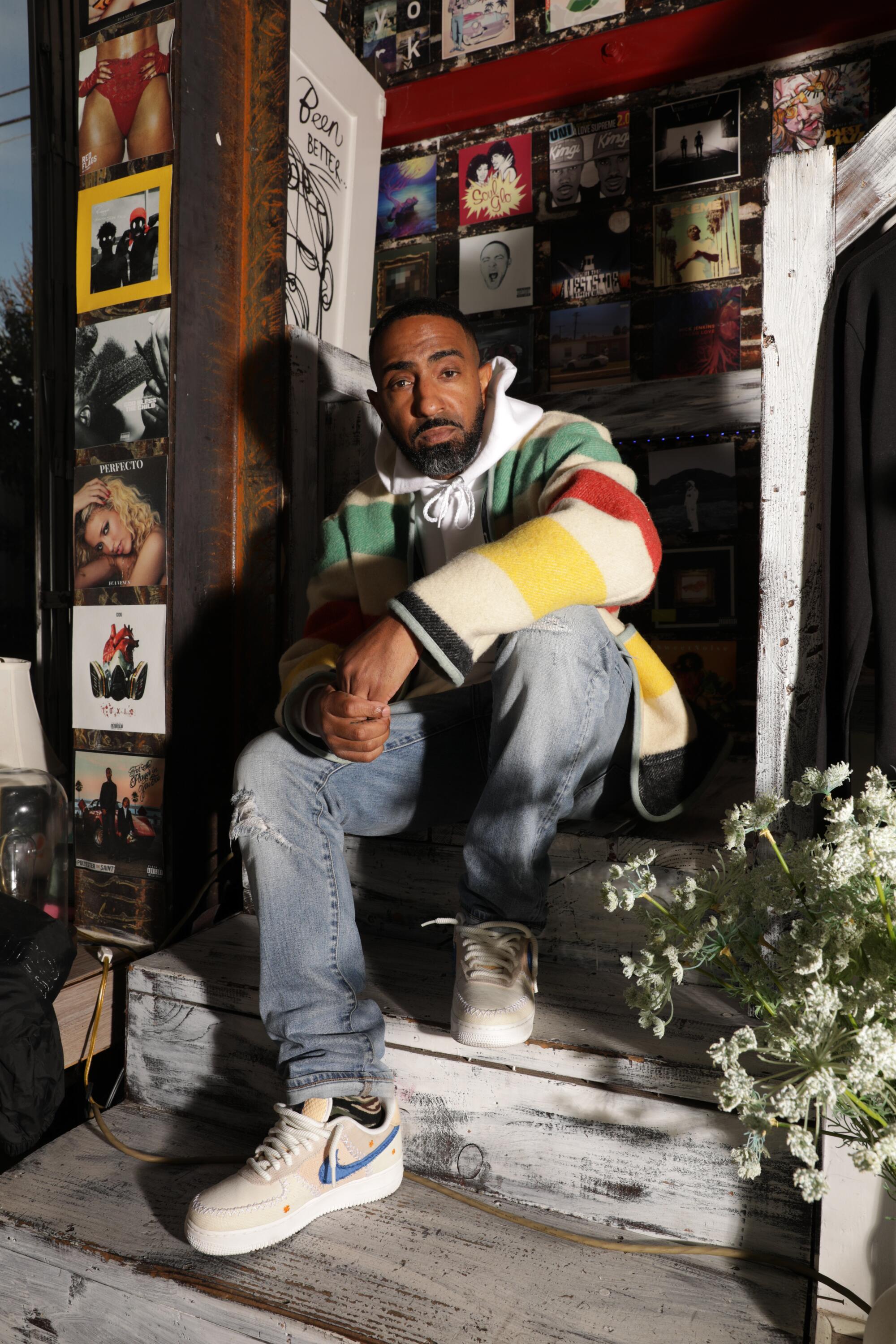
Anwar Carrots — he’s always been beyond his years. When he wasn’t with Rogue Status, he’d be on the block, he’d be up on Fairfax at all the different events. Na-Kel Allah Smith, Casey Veggies, Taco and Syd. Dom Kennedy — we made music together; his first studio was in that same office space right upstairs from us. Taco was making these Seattle Mariner hats — they were New Era. He would stitch an “I” on one side and “K8” on the other. So it read, “I SK8.” And he’s, like, 13 at the time. Tyler, the Creator, Odd Future — they’re all on the block, hanging out, in particular in Diamond Supply Co. and a few others. Also, on that very corner, you had SLB, Sal Barbier, one of the pioneering Black professional skaters. These young brothers and sisters would come on the block — in part due to the Black presence there. They saw us, and we welcomed them. All of that is well documented.
You’ve got to always go back to the nightlife as well. Everybody’s throwing parties. A lot of people came from promoting backgrounds. There was a lot of press, a lot of different things going. But we always were celebrating something and always showing up for each other. You had Nacional on Wilcox and Hollywood, which we would hit all the time. Dom DeLuca from Brooklyn Projects used to throw a weekly there. And then you had what I consider the Studio 54 of our time, Holly’s, right next door to Nacional. Javier Laval and Jerry Lorenzo, who later started Fear of God — I credit them with bringing these things together.
Here’s the background: Javier and Jerry started throwing these nights, and they both have the initials “JL.” So they called themselves JL Nights. They started doing this mixer at a soul food restaurant on Hollywood Boulevard in Hollywood — it was in a historic home — and it was absolutely incredible. Javier worked as a casting director for Chris Robinson, the director who did “ATL” but who is also is known for his music videos. Javier used to bring the most beautiful women, models. Then you have all of us skaters, rappers, all of us on the fashion side of things — we were all rough around the edges. You had this incredible mix of people. RZA would come through, Quentin Tarantino came through. Everybody’s vibin’ and connecting. That was one spot — Javier and Jerry were throwing parties in different locations — but from there, they started doing nights at Holly’s. Our boy Gomez Warren was the resident DJ, one of the most incredible DJs you’ll ever hear. And those nights were electric. Absolutely electric.
That was the mid-to-late aughts. Still, among those who lived it, it was the most legendary. When you mentioned Holly’s, everybody lighted up, because that was when everybody came together. And it was incredible. That was all Jerry and Javier (and their team, of course).
Everybody needed each other in different ways, or we were always working with each other and utilizing each other in different ways. One of the aspects of that world — a world that I’m still very much a part of — was doing business with friends. That was absolutely a double edged sword. You’re not always seeing eye to eye. I was burnt out from some of it. Doing sales and marketing for brands, sometimes you’re the last to get paid. Or sometimes you’re getting in arguments with friends, and it’s putting these relationships in jeopardy. We were building something that was unprecedented in a lot of ways. There was no blueprint. We were learning from each other and taking risks all the time.
Now, so many people have gone on to be fine artists, or, in my case, someone who works in the arts, and from a curatorial aspect. What I boil it all down to is that you have an incredible group of storytellers in a lot of mediums. I’ve always thought creativity is creativity period. You can evolve into a bunch of different things and not be limited to one field or another. And I think there’s been a lot of incredible examples of how to do that.

Man, I miss a lot of friends from that time — some are not friends anymore — but life pulls you in different directions. I miss that time of having fun and just feeling like you were creating your world and your future. Every day, it felt like a world of our own making. A bunch of kids who didn’t know what they were doing, kind of figuring out things and making up the rules as they went along. And while I get those feelings in a lot of my ventures, I never feel as connected as I did back then.
To be able to make an impact, economically, visually and aesthetically from a youth perspective, is one of the utmost things I’m proud of. It’s not something that happens every day.
Khalil Kinsey serves as chief operating officer and chief curator for the renowned Kinsey African American Art & History Collection and as director of the Kinsey Foundation for Art & Education. He is co-founder of L.A.-based wine and music collective Westside Winos, and the nonprofit subscription wine club Natural Action. Khalil is also partner in the recently opened Offhand Wine Bar in Santa Monica, as well as Context Projects, a creative consulting agency and gallery space. He is an avid world traveler, snowboarder and music connoisseur.
More stories from Image
